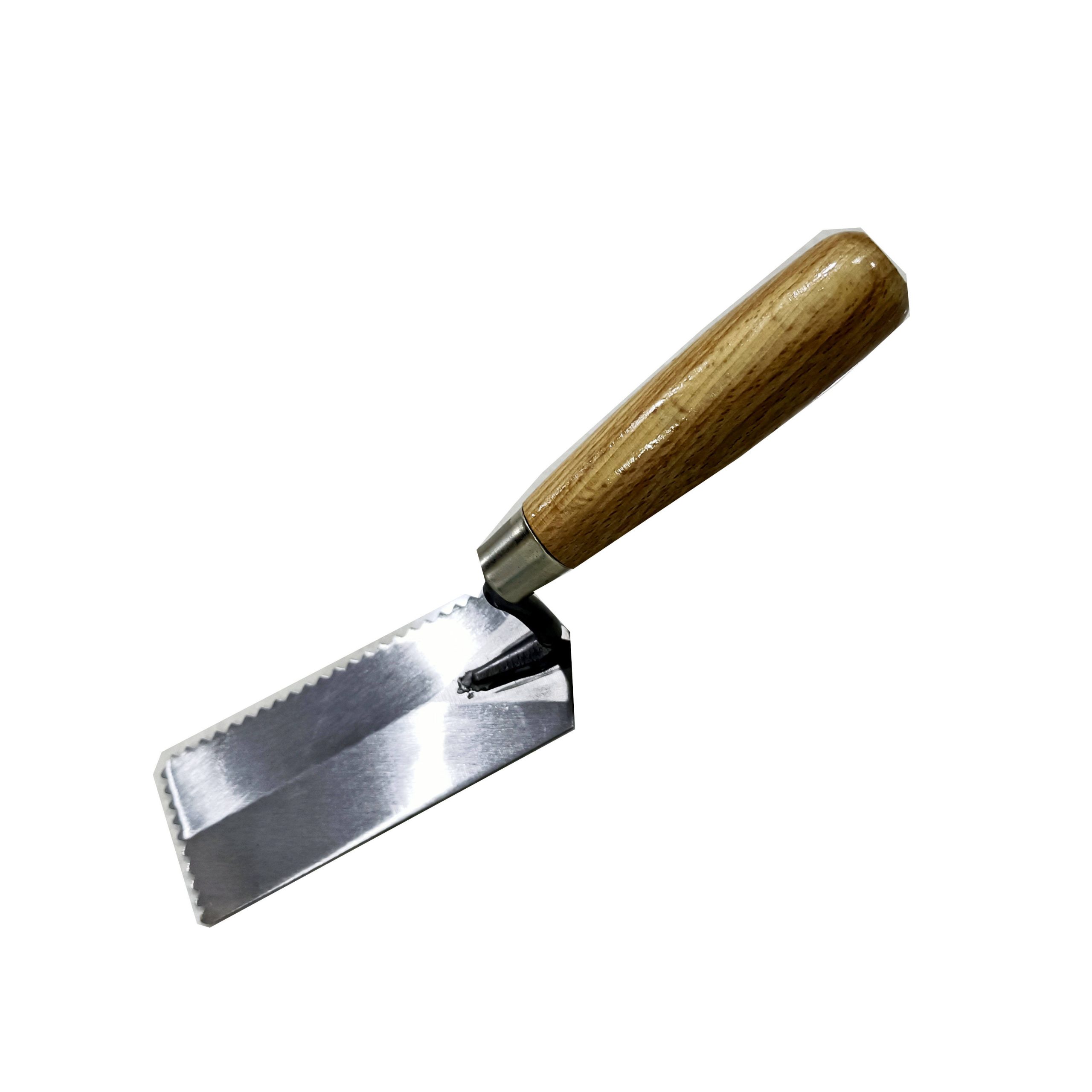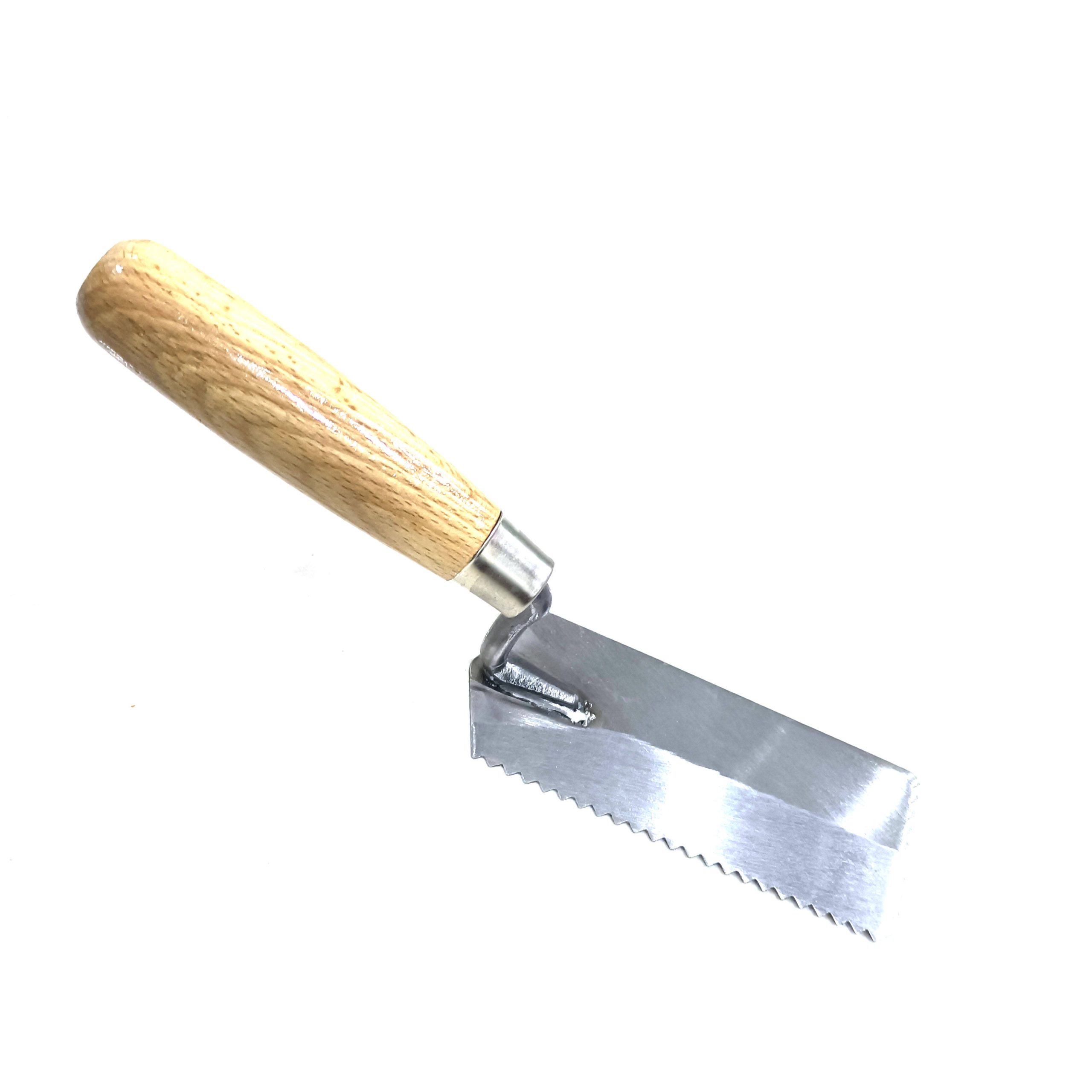Innovations in wooden handle design have brought together functionality and aesthetics, pushing the boundaries of what wooden tool handles can offer. Modern woodworking techniques, advanced tools, and creative approaches have allowed craftsmen to create handles that not only perform well but also delight the senses. Here are some innovations in wooden handle design that showcase the harmonious blend of form and function:
1. Ergonomic Contours: Woodworkers are now using advanced carving techniques and ergonomic principles to shape handles that fit the hand perfectly. These contours enhance grip comfort, reduce fatigue, and promote efficient tool use.
2. Hybrid Materials: Combining wood with other materials such as rubber, silicone, or even metal inserts can enhance grip, shock absorption, and durability. This fusion of materials adds a touch of modernity while improving handle performance.
3. Textured Surfaces: Creating textured surfaces on wooden handles provides better grip, especially in wet or oily conditions. Texturing can be achieved through carving, sanding, or using specialized tools.
4. Integrated Storage: Some tool handles are now designed with built-in storage compartments for small accessories or replacement parts, making it convenient for users to have everything they need at hand.
5. Personalization Options: Laser engraving, woodburning, and inlay work allow for intricate customization. Woodworkers can add names, logos, or unique designs that personalize the tool and make it stand out.
6. Multi-Purpose Handles: Handles are being designed to accommodate multiple tool attachments. This modular approach reduces the need for separate handles, promoting efficiency and versatility.
7. Artistic Carvings: Woodworkers are creating intricate carvings, patterns, and motifs on handles that turn them into genuine works of art. These handles add beauty and cultural significance to functional tools.
8. Minimalist Design: Simplistic, minimalist handle designs emphasize clean lines and uncluttered aesthetics. These handles are both visually pleasing and functional, without unnecessary embellishments.
9. Sustainability Focus: Innovations in wooden handle design are often aligned with sustainability efforts. Handles made from reclaimed wood, salvaged materials, or fast-growing tree species contribute to eco-friendly practices.
10. Digital Design and Prototyping: Advancements in technology allow woodworkers to create digital designs and prototypes before crafting the final handle. This precision ensures that the handle’s form and function are perfectly balanced.
11. Curved Handles for Tools with Angles: For tools with angled heads, such as certain hammers or axes, handles are designed to accommodate these angles, ensuring a more ergonomic and efficient grip.
12. Vibrant Stains and Finishes: Woodworkers are experimenting with vibrant stains, dyes, and finishes that enhance the wood’s natural beauty while adding a splash of color and personality to the handle.
These innovations demonstrate how wooden handle design has evolved beyond mere utility. Today’s wooden tool handles are not only functional tools but also pieces of art and engineering that enhance the user’s experience and contribute to the overall aesthetics of craftsmanship.


